| Adineta vaga is a very common bdelloid found in many samples from soil and mosses in our region. It often occurs together with other Adineta species like A. steineri. (1) |
| This species is the first rotifer where the (horizontal) transfer of genes from other organisms has been proven. Evidence for this is given here: http://www.spektrum.de/artikel/957814&_z=798888 |
|
|
|
Adineta vaga: head in two different focal planes, ventral view. The ventral side of the head is covered with cilia (ciliary field) which accomplish the moving of the rotifer. left image: bristles at the lamella of the rostrum (yellow arrows). The red arrows point to the cingulum. Right image: the arrows point to the 4 "U-hooks" on each side that act like rakes by scraping over the surface and gathering bacteria.
The number of these structures is now considered species-specific and therefore should be counted by a standardized method. In the literature up to now the terminology is not clear. Because the basal structures (called "U-hooks" by Donner (1965), arrowheads) are resistant to treatment with SDS or NaOCl they can be precisely counted. The distal structures (here called "denticles") dissolve pretty fast in NaOCl. These are named differently in the literature. It is not clear that if former authors gave a number of "denticles" they also considered actually the outer and inner margins of the basal plate as "denticles" , if they gave a number at all. Therefore numbers given in the literature are ambiguous and cannot be used as a reference. (For Adineta barbata NoUH is 8 and for A. steineri NoUH is 9). (1) |
| |
 |
| Adineta vaga: another specimen, focus plane on the ciliary field and the rakes.(2) |
| |
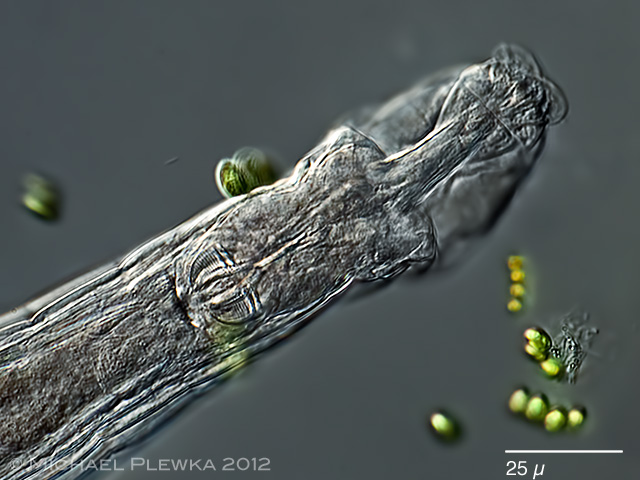 |
| Adineta vaga: same specimen, focus plane on the dorsal side of the head.(2) |
| |
 |
| Adineta vaga, specimen from Bonampak, Mexico (3) |
| |
| The number of these structures is now considered species-specific and therefore should be counted by a standardized method. In the literature up to now the terminology is not clear. Because the basal structures (called "U-hooks" by Donner (1965), arrowheads) are resistant to treatment with SDS or NaOCl they can be precisely counted. The distal structures (here called "denticles") dissolve pretty fast in NaOCl. These are named differently in the literature. It is not clear if the authors made the sum of the marginal "denticles" because they may be considered actually as the margins of the basal plate) and the inner denticles , if they gave a number at all. Therefore numbers given in the literature cannot be used as a reference. (For Adineta barbata NoUH is 8 and for A. steineri NoUH is 9). |
|
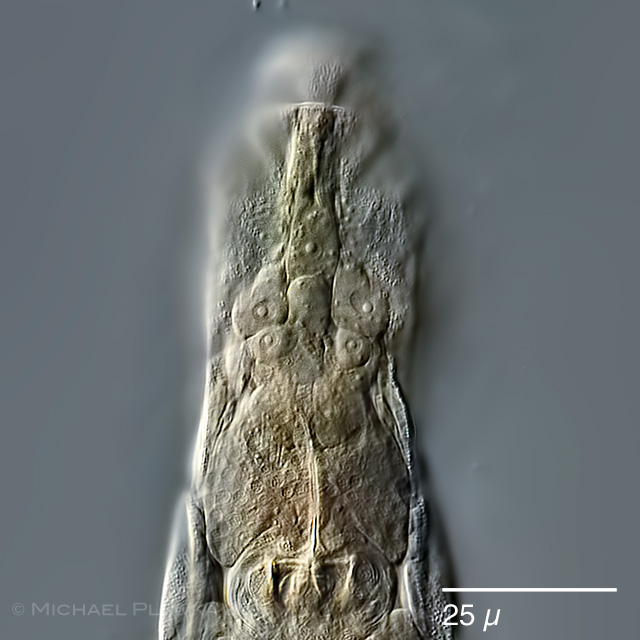 |
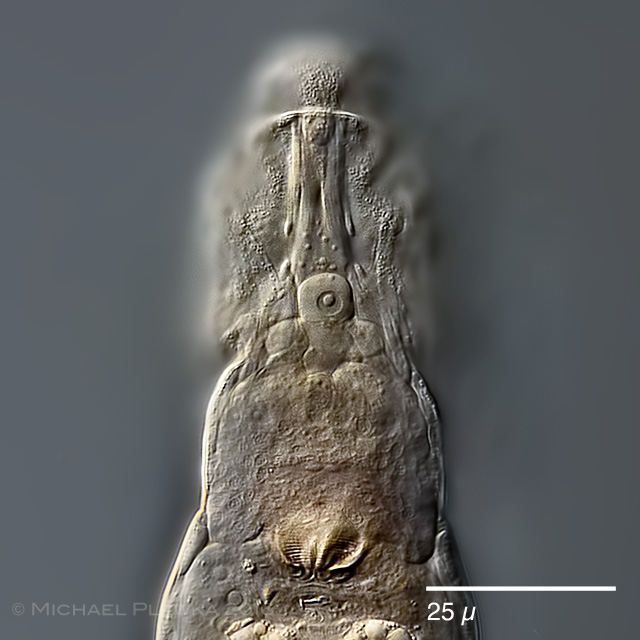 |
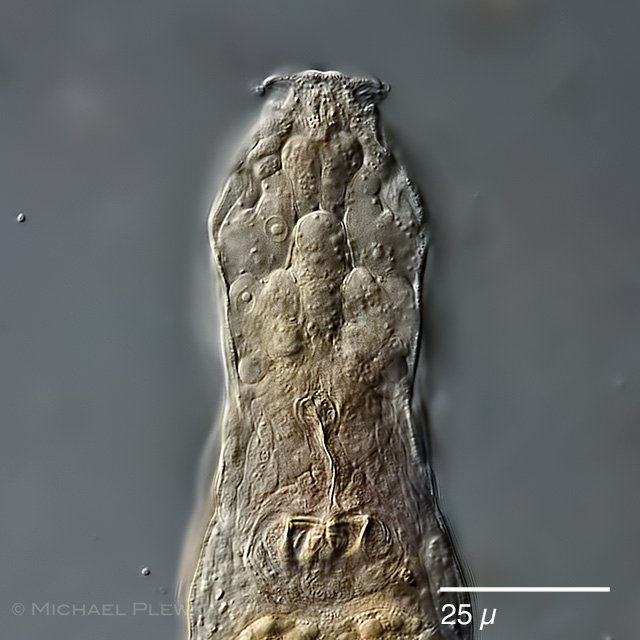 |
| Adineta vaga, series of 3 optical sections through the head from dorsal to ventral side; the images show the hypodermic cells with their nuclei. |
 |
| Adineta vaga, specimen with parasites |
| |
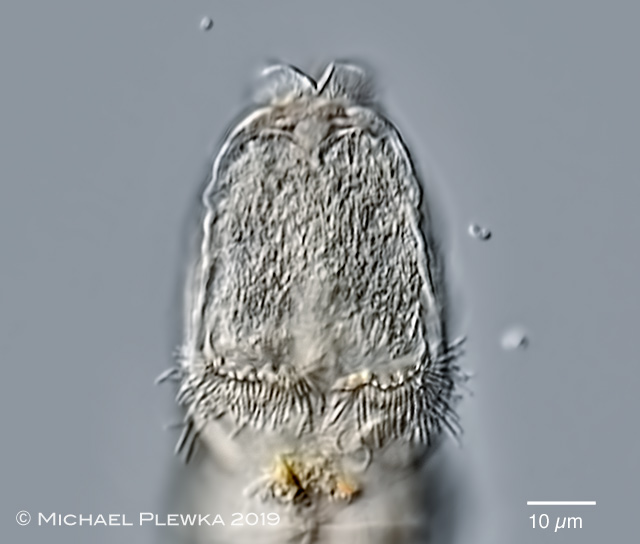 |
| Adineta vaga, specimen with a "beard" which seems to be fungi or bacteria (6) |
| |
| |
|
|
| Location: Gevelsberg, Stefansbachtal Schulzentrum, Gruenes Klassenzimmer (1) Bonampak, Mexico (3); Hattingen Oberstueter (4),(5); Quimper, Brittany, France, Frugy park (6) |
| Habitat: Moss on tree (Salix) (1,3); moss on roof (4); moss on sandstone (5); moss (6) |
| Date: 17.8. 2008 (1) 1.3.2014 (3); 02.11.2014 (4); 07.02.2016 (5); coll. : 14.08.2019; img.: 10.12.2019 (6) |